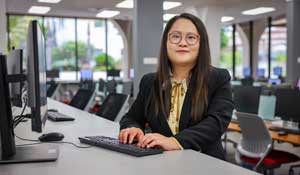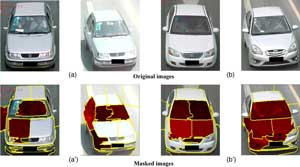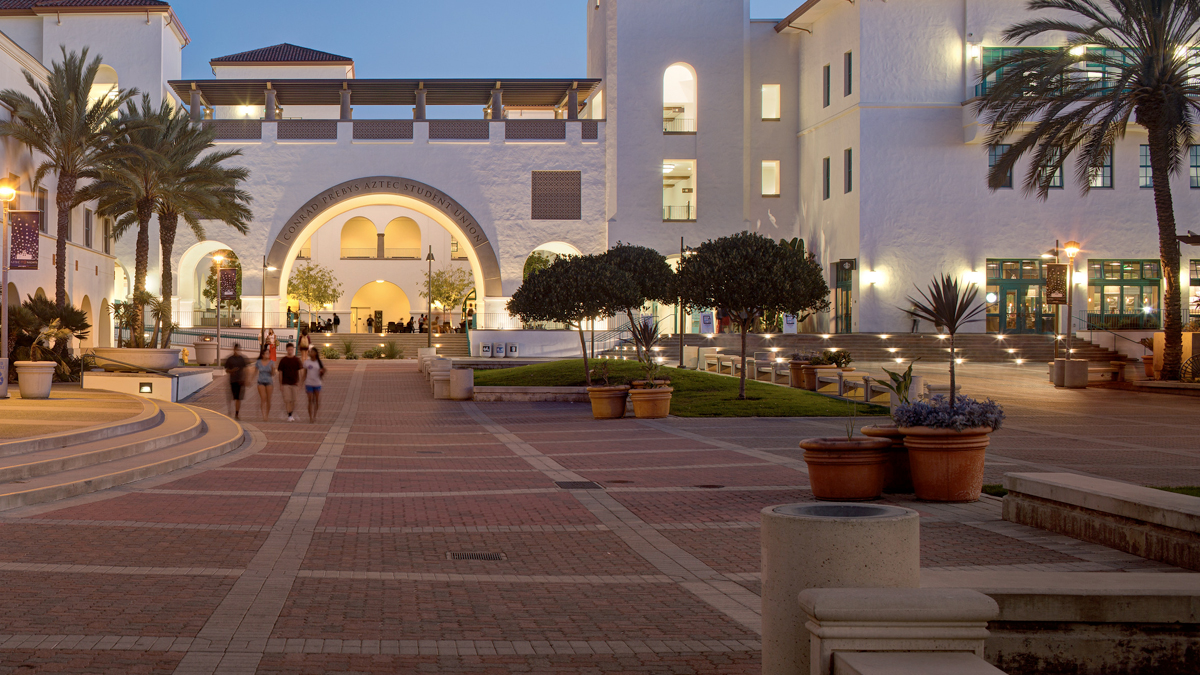Using Artificial Intelligence to Improve Traffic Safety and Efficiency
 Open the image full screen.
Open the image full screen.
Huangfu, with teams of researchers from China’s Chongqing University, used AI to determine the precise identification of vehicles as they moved through city streets and the potential for cracks, potholes and other signs of distressed pavement on those streets.
Traffic Surveillance
Using specially adapted traffic cameras, the team accurately matched the components of a single vehicle as it moved through various locations. The research, published in Expert Systems, demonstrated how AI could precisely identify specific vehicles regardless of weather conditions, camera angles or lighting.
Huangfu and the team used a method of AI called of Adaptive Super-pixel Discriminative Feature-selective Learning (ASDFL) to analyze the super-pixels in the traffic cameras’ images to assign a “weight” to the color intensity of each vehicle. Using these weights, a colored “mask” is applied to the image of each vehicle. The greater the weight, the heavier the mask, which is created by using red color-coded components as an overlay on the image of each vehicle.
Since each colored-coded mask is unique to each vehicle scanned by the system, researchers were able to use a second AI technology called convolutional Neutral Network (CNN) to match vehicles as they moved from place to place.
 Open the image full screen.
Open the image full screen.
Identifying Road Pavement Distress
Huangfu also joined a team of researchers who investigated a novel method of using AI to identify potential hazards in the road pavement used by those vehicles.
The research team initially used high-resolution images to determine patches of early pavement distress, however, they noticed they had difficulty coming to conclusions due to image enlargement and low efficiency. Using an AI method called Kernel Inverse Pyramidal Resizing Network (KIPRN), the researchers were able to create a three-layer pyramidal large-scale pavement image which extracted details that greatly improved the accurate early identification of pavement cracks and flaws.
After testing nearly 44,000 pavement images using the KIPRN system, their findings were presented at the International Conference on Neural Information Processing in 2022 where they discussed how the technology outperformed current pavement distress identification methods in both performance and efficiency.
“Traditionally, pavement distress recognition is done manually by professionals, and this requires a large amount of labor and extensive domain knowledge,” said Huangfu. “Given the complex and vast network of roadways it is almost impossible to accomplish the pavement distress inspection manually. Therefore, automating the pavement distress recognition task is essential.”
AI’s Potential
These are just two ways AI and machine learning can improve human lives, but given the technology’s immense potential, Huangfu, her students in the AI4Business Lab and her fellow researchers expect even greater AI achievements in the near future.
“Artificial intelligence has given us the ability to improve our safety, detect and cure illnesses, solve crimes, and predict stock prices,” she said. “One of my goals is to advance science and pass it to the next generation. Teaching and collaborating with students and diverse professionals on various research projects is a great way to achieve this.”

